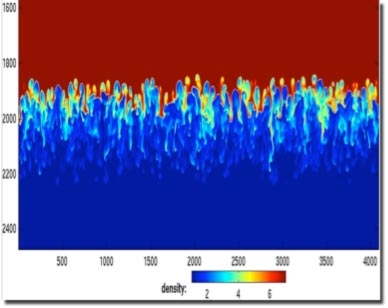Early science runs on Dawn push the forefront of predictive simulation
LIVERMORE — The 500-teraFLOPS Advanced Simulation and Computing (ASC) program's Sequoia Initial Delivery System (Dawn), an IBM machine of the same lineage as BlueGene/L, has immediately proved itself useful as several initial science results — performed from April through August — demonstrated ground-breaking science, enhanced code performance, and some of the highest resolution, largest simulations ever run in their respective scientific field.
Delivered to the Lawrence Livermore National Laboratory in January and February, Dawn (an IBM Blue Gene/P system) will lay the applications foundation for multi-petaFLOPS (floating point operations per second) computing on Sequoia, a 20-petaFLOPS IBM system to be delivered in late 2011.
All three ASC labs — Lawrence Livermore, Los Alamos, and Sandia — have been busy using Dawn for the past five months and have been generating exciting new results across a broad spectrum of applications.
"The rapidly increasing performance of new supercomputers, such as Dawn, allows us to perform calculations unimaginable only a few years ago," said Denise Hinkel, AX Division's Plasma Theory Group Leader at LLNL. "Today's supercomputers are the enabling technology for predictive laser-plasma interaction modeling, and recent large-scale simulations on Dawn are helping guide focal-spot-size decisions for the National Ignition Facility beams and helping with ignition design optimization."
Below are examples of NIF laser and other simulations recently run on Dawn.
Contact
Don Johnston[email protected]
925-423-4902
Related Links
LLNL ComputationNNSA awards IBM contract to build next generation supercomputer
Advanced Simulation and Computing
National Ignition Facility
IBM Research: BlueGene project
Into the Wild Blue Yonder with BlueGene/L
Top500 list
National Nuclear Security Administration









